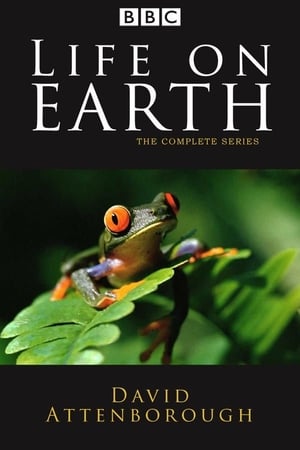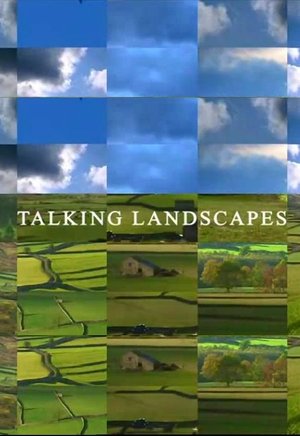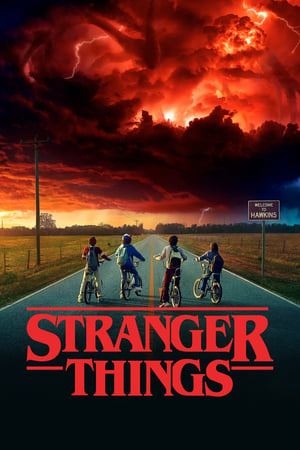2016-10-12
With high speed camerawork and breakthrough new science, we enter the fast-paced world of hummingbirds as never before. Speed is their middle name. Their lives are moving faster than the eye can see. They possess natural born super powers that enable them to fly backwards, upside-down, and float in mid-air. And for the first time, we see them mate, lay eggs, fight, and raise families in intimate detail. They are great athletes, tender mothers, brave in combat, and up for any challenge. They are Super Hummingbirds, the smallest and most brilliant birds on earth.
2016-10-19
Vianet D'jenguet has lived half of his life in Europe, yet his heart still lies in his homeland, his Congo. As a successful wildlife cameraman, D'jenguet is returning to his roots to reveal the beauty and majesty of his country and its people. During his journey, D'jenguet explores a vibrant "African Eden" - a Congo complete with chimps, gorillas, weaver birds, Colobus monkeys, swamp antelopes, forest elephants and buffalo - and a jungle tribe who still reveres his great-grandfather. D'jenguet shines a spotlight on his beloved homeland and discovers an even deeper connection with this place than he ever imagined.
2016-10-26
Everyone loves giraffes, but what do we really know about them? Dr. Julian Fennessy has spent the last 20 years of his life studying giraffes. Now he's starting to reveal their secrets- the most important being that they are disappearing. The giraffe population in Africa is down by 40 percent in just two decades. In collaboration with a determined Ugandan Wildlife Authority team, Fennessy wants to round up 20 of the world's rarest giraffes to get them to safety through the wild heart of Uganda, which means embarking on a special voyage across the mighty Nile River. The stakes are high in this urgent and daring mission against poachers affiliated with organized crime, but if successful, the reward will be a brighter future for an animal we have somehow overlooked.
2016-11-02
Cats are among the most feared and revered creatures on the planet. Their power, strength, and enigmatic nature have fascinated us for centuries. They are one of the most studied mammals in the world yet only now is their real identity being understood - from their incredible hunting abilities, to their unique physiology and remarkable behaviors. With nearly 40 different species, thriving in almost any environment, the cat is one of the most successful predators since the dinosaurs. Using the latest camera technology and working with leading scientists, we are able to tell the story like never before. Join Nature in this epic two-part event as we journey across the globe tracking down the origins of these diverse creatures. Take an in-depth look at what makes the family of felines unique and the evolutionary tricks and adaptions that truly make a cat, a cat. In Part 1, discover how the first cats arose in the forests of Asia, how they spread across the continent and later came to conquer Africa. We reveal how cats evolved with an in-depth look at lions, servals, caracals, cheetahs, tigers, fishing and sand cats.
2016-11-09
Cats are among the most feared and revered creatures on the planet. Their power, strength, and enigmatic nature have fascinated us for centuries. They are one of the most studied mammals in the world yet only now is their real identity being understood - from their incredible hunting abilities, to their unique physiology and remarkable behaviors. With nearly 40 different species, thriving in almost any environment, the cat is one of the most successful predators since the dinosaurs. Using the latest camera technology and working with leading scientists, we are able to tell the story like never before. Join Nature in this epic two-part event as we journey across the globe tracking down the origins of these diverse creatures. Take an in-depth look at what makes the family of felines unique and the evolutionary tricks and adaptions that truly make a cat, a cat. In Part 2, Track the story of cats into the Americas, from battles with their age-old rivals, the dog family, to the rise of domestic cats. Meet the mighty jaguar, the urban mountain lion, the curious ocelot, the Canada lynx, the nimble margay, the Siamese cat and the Sphynx.
2017-01-11
The coldest and snowiest places on earth, such as the Arctic Circle or Antarctica, pose a challenge to human visitors. But what about the year-round animal population? How do they cope for many months with life in these frozen wonderlands where temperatures can plummet to as low as minus 50 degrees? Find out how these creature adapt to their surroundings or employ clever tactics to survive.
2017-02-01
Spy Creatures explore the rarely seen emotions of animals, revealing if they are as strong and complex as our own. Join the “spycams” as they are accepted into a wild dog pack, witness elephant love, and are mourned by a troop of monkeys.
2017-02-08
Spy Creatures infiltrate the world of animal intelligence, ingenuity, and creativity. Watch our spies disguised as animals observe a gray squirrel stealing Spy Nut, a sea otter cracking open a meal, and an orangutan washing with soap.
2017-02-15
Spy Creatures and their new wild friends rely on each other to look out for predators. A Spy Meerkat babysits meerkat pups while a Spy Cobra pretends to attack the mob. Spy Crocs witness a convenient partnership between real crocodiles and birds.
2017-02-22
Spy Creatures infiltrate the underground world of animal mischief, crime, and retribution. Spy Monkey is caught between crossfires as real monkeys fight over beach bar alcohol. Spy Egret is also a waterhole victim when elephants throw mud everywhere.
2017-03-01
The final episode explains how the concept of the Spy Creatures evolved at John Downer Productions from the original Bouldercam to the Penguincams that inspired the next-generation “spycams” featured in this series. It shows the painstaking work that goes into building the lifelike models and how the team deploys and operates the robotic cameras on location all over the world.
2017-03-29
The Sierra Nevada, a mountain range running about 400 miles along the eastern side of California and stretches into Nevada, is home to three national parks: Sequoia, Kings Canyon and Yosemite. This is a land of giants, whether speaking of trees soaring to nearly 300 feet, or massive stone monoliths far taller than any skyscraper. But the force that has given rise to the earth's largest living trees and carved out the iconic natural landmarks of the Sierras is water. The role that water has played in the creation and evolution of Yosemite Valley cannot be overstated - feeding its numerous wild rivers and countless waterfalls, and making life in this stone wilderness possible. The second force, crucial to the Giant sequoias' ability to reproduce, is fire. It is the delicate balance of these two elements, water and fire, that is vital to the continued existence of the wildlife and trees that inhabit the Sierras. Despite the recent heavy rains and snowfall, scientists are finding that water is scarcer and the threat of fire is more likely as the area continues to experience rising temperatures upsetting that important balance. Geologists, ecologists, researchers and adventurers investigate how the changing climate is affecting one of America's greatest wildernesses.
2017-04-12
Viva Puerto Rico follows the work of three conservationists and the ways in which each is trying to restore populations of the island’s most endangered species: the Puerto Rican Amazon parrot, Leatherback turtle, and manatee.
2017-04-19
Deep in the heart of the Brazilian wetlands, the mysterious and secretive Giant armadillo digs a new burrow every other night. Once this termite-eater moves on, it leaves behind one of the hottest plots of real estate in the tropical Pantanal for 80 species of diverse and ever-changing animal clientele.
2017-04-26
Austria’s Kalkalpen National Park is the largest tract of wilderness in the Alps, but it wasn’t always that way. The park was once the site of major logging and mining operations, but those activities ceased more than two decades ago. Three years in the making, Forest of the Lynx chronicles life in this remote wilderness and the complex partnerships among plants, insects, animals and trees.
2017-05-03
In this two-part series, join John Downer Productions, producers of "EARTHflight" and "PENGUINS: Spy in the Huddle", for a front row seat into an in-depth look into the lives of dolphins. The series incorporates unique footage from 13 ingenious “spy” cameras including animatronic squid, a robotic turtle and even a dolphin “double agent”.
2017-05-10
In South Carolina, a pod of bottlenose dolphins has taken teamwork to a whole new level. As a group, they corral entire shoals of fish onto the shore and then devour as many as they can. Stranding is a serious hazard for dolphins, but this pod has mastered the technique.



















